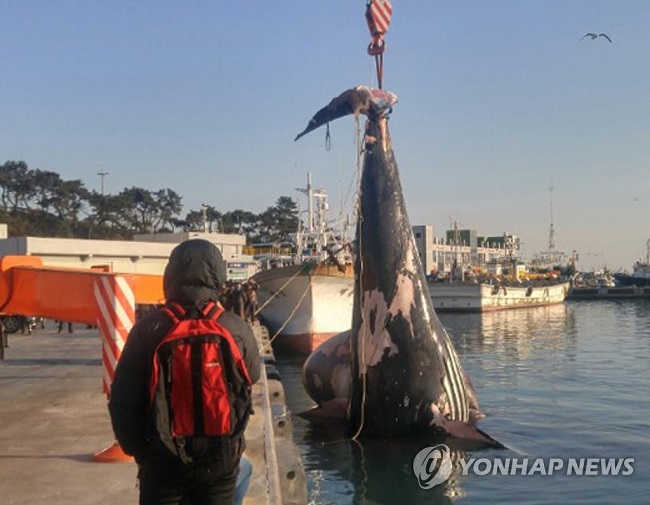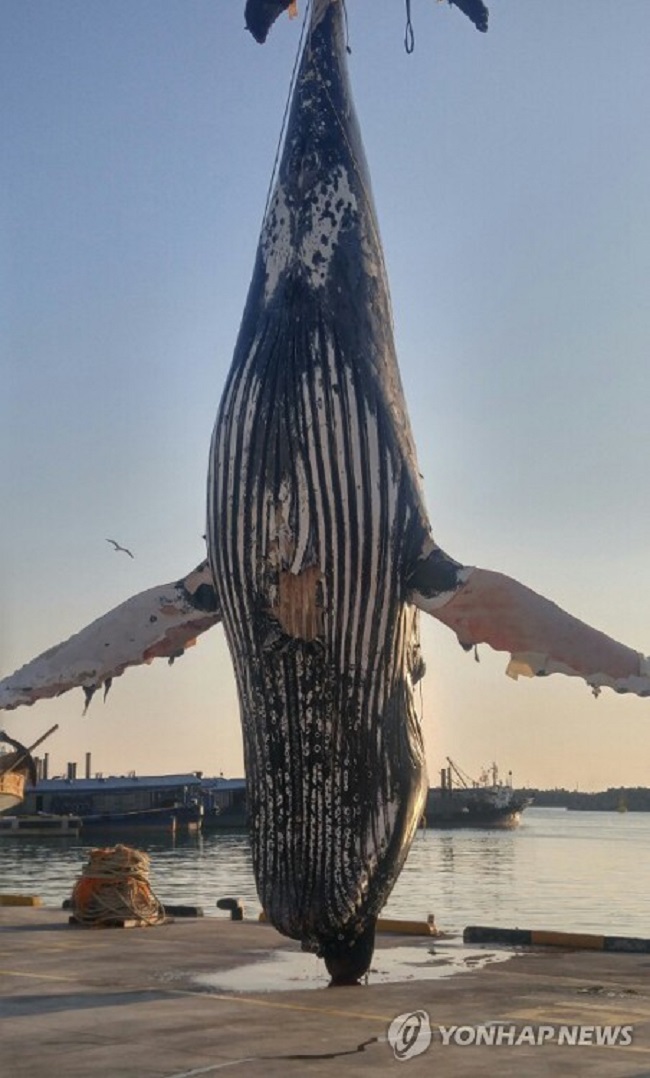
The carcass of a humpback whale discovered by a fishing boat is likely to end up on the trash heap, as the individual who found the dead animal tied up in fishing nets has adamantly turned down entreaties from whale researchers for the “catch” to be donated to science. (Image: Ulsan Coast Guard)
ULSAN, Jan. 31 (Korea Bizwire) — The carcass of a humpback whale discovered by a fishing boat is likely to end up on the trash heap, as the individual who found the dead animal tied up in fishing nets has adamantly turned down entreaties from whale researchers for the “catch” to be donated to science.
Certain distinct populations of humpback whales are listed as endangered on conservation agendas and are protected from commercial whaling internationally.
According to the Ulsan Coast Guard and the whale research center at the National Institute of Fisheries Science, the humpback whale in question was stumbled upon by the fishing boat at a location roughly 16km east of Jujeon Harbor on January 28.
The humpback whale is female, three to four years old, and measures 10.4m from tip to tip and 6.4m around, weighing 12.1 tons. These animals can live up to 60 years long.
The discovery of the dead humpback presents a rare opportunity for South Korean whale researchers, as only eight have been witnessed in nearby waters since 2000.
The closest areas where their appearances are more frequent are in the sea surrounding the Japanese islands of Okinawa and Ogasawara.
Experts believe this particular whale was lost and had meandered into the East Sea.
After the whale was brought into port, the Coast Guard used a metal detector to confirm that it had not been the victim of poachers.
Unlike certain other seafaring mammals, humpback whales cannot be sold for food due to their protected conservation status and thus carcasses can only be used for research purposes.
Initially, researchers planned to collect tissue samples, parasites, and the whale’s skull. Analyzing the skull and parasites would reveal the distinct population the whale belonged to, while the DNA strands contained in the tissue samples would disclose the dead animal’s unique characteristics.
However, such hopes have been shattered, as the fishing boat’s owner has refused to turn over the whale without being compensated for the supposed damages caused on the fishing grounds by the animal.
As a result, researchers have been unable to do anything but throw up their hands and sigh in frustration.
Meanwhile, the local government is examining various options for the disposal of the carcass, with options considered so far to be incineration, burial in a landfill or ground into feed.

Meanwhile, the local government is examining various options for the disposal of the carcass, with options considered so far to be incineration, burial in a landfill or ground into feed. (Image: Ulsan Coast Guard)
S.B.W. (sbw266@koreabizwire.com)






